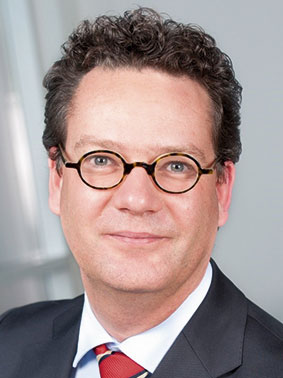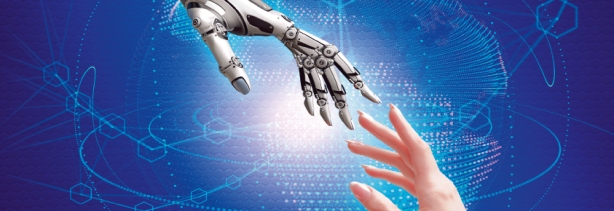
November 20, 2045
“Granddad, can you help me out with this paper on fossil fuels for my history class?”
“Sure, what do you want to know?”
“Well, how did it work? How were they able to use oil for charging my hoover board and use gas for cooking?”
“Mmm, maybe it’s far more interesting to explore how they managed to switch to our current set of energy sources: wind, sun and biomass. And what impact it had on the oil & gas industry and the traditional energy suppliers.”
Use of Fossil Fuels
“For a very, very small period in the world’s history, for some 250 years, mankind used coal, and later oil or natural gas as their main sources of energy. Before the 1770s, the main power sources were wind, water and wood (today we’d call it biomass), as they are nowadays. After that, coal was brought to the surface from a depth of thousands of feet and used for steam engines. Much later oil was pumped up and transported to complex industry plants, ‘refineries’, sometimes over thousands of miles. Here they transformed the crude oil into semi-finished products: diesel and petrol to move automobiles. These products were transported to fuel stations located in the cities and alongside the highways. One could fill an automobile with these fluids and cover over 400 miles. Gas and coal were mainly used to produce electricity in power plants. A power plant is like a huge version of our home biomass system: it’s a very large fire place where they burned the fossil fuels to heat water; the steam power drove a generator which created the electricity. This electricity was transported to the homes via a nationwide grid of high-voltage powerlines into local distribution grids. Effective, but very, very inefficient… no more than 46% of the energy value of coal was transformed into electricity. People in the Netherlands used natural gas for cooking and heating their homes. Can you imagine that they transported this highly flammable product through pipelines across the country, under high pressure? It is surprising that the number of explosions was minimal. Your hoover board is powered by energy from our solar cells and our home hydrogen energy system; not by fossil energy.”
Need for Change
“For a long time, oil and gas were the generators of the economies. They brought a lot of development, economic growth and wealth to the countries that possessed these fuels. But there was also a downside: they caused political tensions, wars and environmental pollution. The combination of the limited supply of fossil fuels and the increasing CO2 pollution fired a discussion on stimulating the transition to renewable energy: solar power, water power and wind energy. This was a very tough process where individual nations and industries made very small steps to reduce CO2 pollution.
Surprisingly, around 2020 the catalysts of the energy transition were not the global warming or the limited supply of fossil fuels, but the IT capabilities. In 2020, the installation of smart meters was completed in the Netherlands the popularity of electric cars, scooters and hoover boards like yours required the electricity grid to be become smarter. IT in all kind of applications provided the first solutions to facilitate local production of energy, storage of energy and managing the energy consumption and production to prevent outages due to excess or shortage of energy on the grid. At a later stage these IT applications led to a split in the energy sector: the traditional utility companies providing solar, hydro and wind energy on the one hand, and a consumer market where self-supporting energy solutions resulting in near-off-grid situations for households on the other.”
Smart Meter
“It all started with the roll-out of the smart meter. Every household had an energy meter that administrated the energy usage; in Kwh for electricity and in m3 for natural gas. The 40-year old meters needed to be replaced by smart meters enabling utility companies to measure the usage from a distance and to improve the quality of the invoice. The smart meter was also used to provide a more accurate insight into energy consumption. Increasing energy consumption awareness resulted in a maximum 12% drop in energy consumption. Millions were spent on the roll-out of this meter. A very weak business case from a financial point of view, but in retrospect a vital element with a view to the transition. We still have this meter; but we are now using it differently. Did you know that your grandfather, when he was a consultant, cashed in on these investments in the smart meter? He made some good money on them. He monitored the quality of these projects and provided advice on how to ensure the privacy of the energy consumers.”
“Privacy of the energy consumers, what’s that?”
Acceleration through the Internet of Things
“Combining the smart meter with Internet of Things (IoT) devices gave the development of our current e-home systems a boost. The applications were initially focused on user-friendliness and household security. In those days it was a novelty to turn your lamps and heater on and off with your cellphone. Up to that moment, you had to walk to a wall and turn a switch manually. Nowadays our home energy system determines the heating program based on historical data, the weather forecast, the schedules of the home residents and adjusts this planning real-time according to changes during the day. The lights in and around our home are operated automatically and based on the activities and the mood of the individuals in a specific room.
These applications, ensuring additional comfort in the house together with an increased use of electronic cars and an increased local production by solar panels and roof wind turbines, created a need to better balance the local energy production and consumption. People soon realized that it was much smarter to actively manage the energy consumption and production than to invest more in cables and wires in the ground.
It was around 2025 that the organization e-Aggregate won the Nobel Prize for sustainability. e-Aggregate is now better known for the supply and installation of our hydro fuel cells. But in those days, they were the first to provide an electronic marketplace where households could sell surplus energy and buy additional energy automatically. At different levels, streets, districts and cities, automatic matching was realized and positions were mutually settled and charged on a daily basis.”
Changes in the Market Model
“The success of the aggregators together with the increased local production seriously upset the market model used by producers, suppliers, grid operators and customers. This led to an even wider gap between the business and consumer markets. Households were almost off-grid as they were self-supporting and in a position to trade at street or district level. The traditional energy conglomerates (energy generation and supply) focusing on the B2C market lost their clients. They had to reinvent their business model; only two of these organizations survived. They were able to switch from a polluting oil and coal-based energy production to renewable energy and to focus on the energy supply for the business market. Basically, they used the same technique as the local aggregators. But now they apply it at a nation-wide level. IT solutions are applied to manage the renewable energy: to steer the transportation of the excess of solar energy and wind energy generated in the different parks to different types of electricity storage, as well as the withdrawal from these storages if needed. In the Netherlands the old salt and coal mines were modified to store the large battery packs. And of course, excess energy is stored in the hydro power and storage facility in the Markerwaard polder. Gradually a situation developed where the large-scale solar and wind energy parks and their storage locations were used for the industry and any consumption outside of private homes.
Now let’s get back to the charging of your hoover board. In 2040, the highways and streets were modified: the last petrol stations were replaced by fast chargers and the early electric magnetic highways were introduced. That makes it possible for you to charge your hoover board while waiting for a traffic light. Around that period, the pay-for-use principle was further refined: the use of highways (formerly paid for out of the motor vehicle tax) was combined with your car’s energy consumption. Since then, the Dutch Central Administrative and Billing Institute have charged people for their use on a daily basis. The information where you have driven, parked, stopped and charged is provided by your car to this institute on a real-time basis.
Not surprisingly, this also led to the nationalization of the earlier liberated energy sector. The consumption of energy outside the private home has become a utility like transportation.”
Mark Lof is a partner with KPMG Advisory. Mark is specialized in Quality Assurance on Business/IT transformation, helping clients to manage the risks of large-scale and complex transformations. In addition, Mark has great expertise of the energy and utility sectors in the Dutch market model, the roll-out of the smart meter and the development of smart grids.



